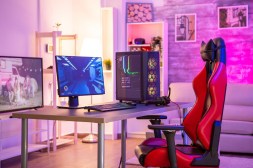The Ultimate Guide to Choosing the Best Laptops for Graphic Design
In today’s digital age, graphic design has become an integral part of many industries. Whether you’re a professional graphic designer or a student learning the ropes, having the right tools is essential to produce high-quality work. One of the most important tools for any graphic designer is a reliable laptop. With so many options available in the market, it can be overwhelming to choose the best one. In this guide, we will explore the key factors to consider when selecting a laptop for graphic design and recommend some of the best laptops in the market.
Performance and Processing Power
When it comes to graphic design, performance is paramount. A laptop with sufficient processing power ensures that your design software runs smoothly without any lags or delays. Look for laptops with at least an Intel Core i5 or AMD Ryzen 5 processor. These processors offer excellent multitasking capabilities and can handle demanding design applications.

In addition to the processor, pay attention to the RAM (Random Access Memory) of your chosen laptop. For graphic design purposes, a minimum of 8GB RAM is recommended, although 16GB or more would be ideal for handling complex projects efficiently.
Display Quality and Color Accuracy
Graphic designers rely heavily on visual elements, making display quality and color accuracy crucial factors when choosing a laptop. Look for laptops with IPS (In-Plane Switching) panels as they provide wide viewing angles and accurate color reproduction.
Additionally, consider laptops with high-resolution displays such as Full HD (1920×1080) or even better, QHD (2560×1440) or 4K (3840×2160). These higher resolutions offer sharper images and more detailed visuals that are essential for precise editing work.
Graphics Card
A dedicated graphics card is vital for smooth rendering and handling complex visual tasks in graphic design software. Look for laptops that feature dedicated graphics cards from reputable brands like NVIDIA or AMD. The NVIDIA GeForce GTX series or the AMD Radeon RX series are excellent choices for graphic design purposes.
Keep in mind that more demanding graphic design work may require a higher-end graphics card, so it’s always wise to check the recommended specifications of the software you plan to use.
Storage and Portability
Storage is another crucial aspect to consider when choosing a laptop for graphic design. Opt for laptops with SSD (Solid State Drive) storage instead of traditional HDD (Hard Disk Drive) storage. SSDs offer faster data transfer speeds, allowing your design software to load quickly and improving overall performance.
Portability is also important, especially if you work on-the-go or collaborate with clients in different locations. Look for laptops that strike a balance between power and portability. A laptop with a 13-15-inch display size is usually considered ideal as it provides a good compromise between screen real estate and portability.
Conclusion
Choosing the best laptop for graphic design requires careful consideration of performance, display quality, graphics card, storage, and portability. By investing in a laptop that meets your specific requirements as a graphic designer, you can enhance your workflow and produce outstanding designs. Remember to research thoroughly, compare specifications, read reviews from professionals in the field, and select a laptop that aligns with your budget and needs. With the right laptop by your side, you’ll be well-equipped to bring your creative visions to life efficiently and effectively.
This text was generated using a large language model, and select text has been reviewed and moderated for purposes such as readability.


